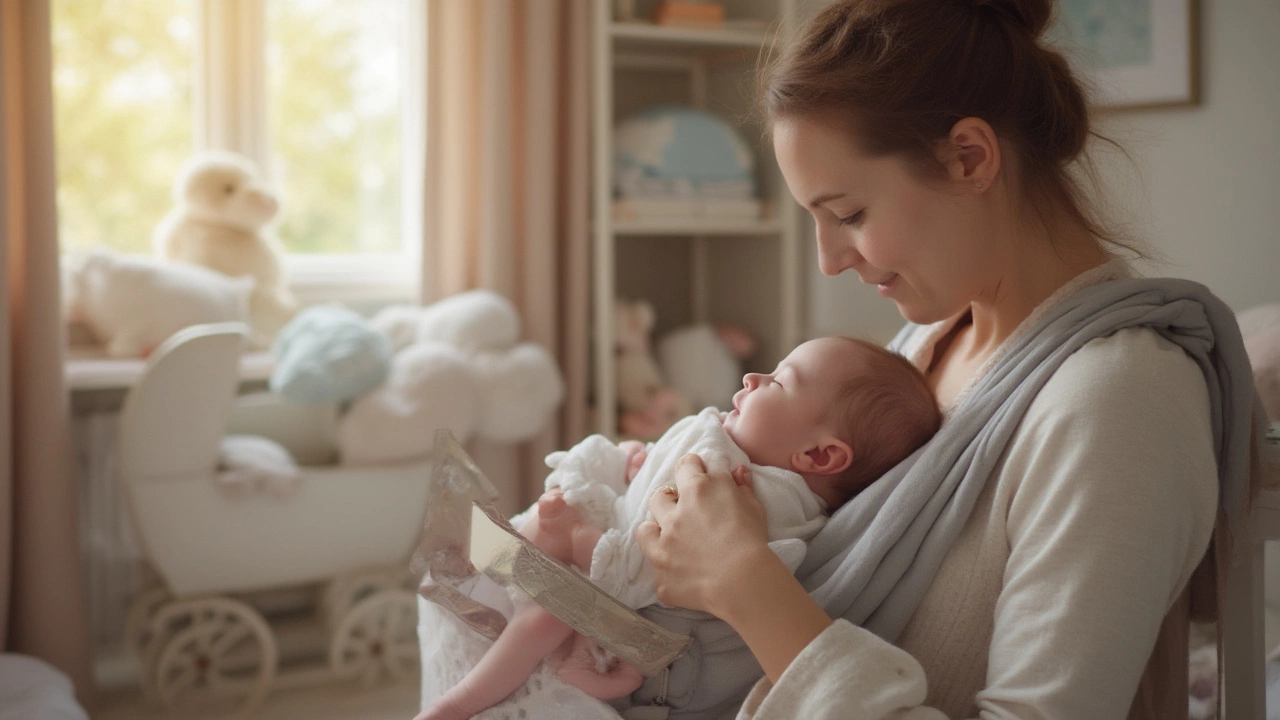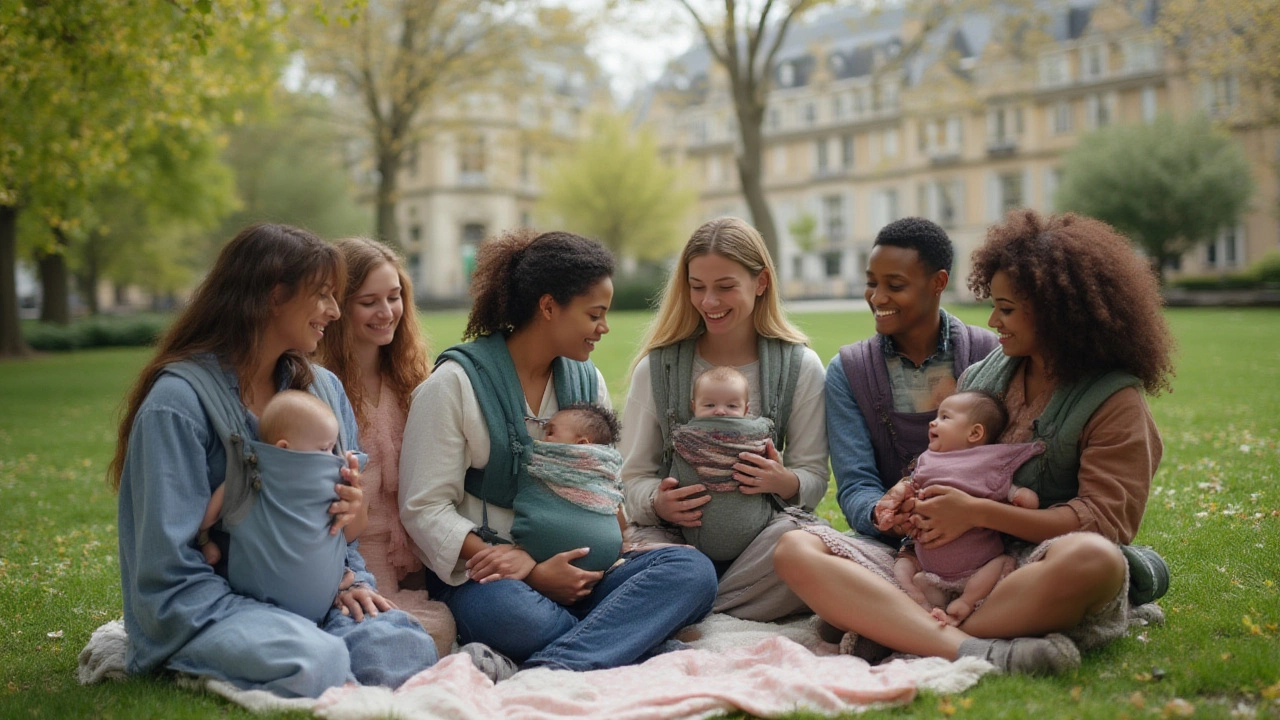When Can I Use a Baby Carrier for My Newborn? Safe, Practical Guidelines & Expert Tips

That swirl of tiny socks, endless swaddling, and the scent of new baby skin—if you’re feeling like a walking diaper station, you’re not alone. Sometimes the only way to keep your sanity (and your coffee hot) is having both hands free, but separating from your newborn feels impossible. Enter the baby carrier. The big question: when is it actually safe to pop your brand-new bundle into one? Here’s the thing: the answer isn’t just about age. It’s about development, safety, and those little details that make all the difference between a snuggly close-cuddle and a wiggly mess.
Understanding Baby Carrier Safety for Newborns
Let’s bust a myth right up front: yes, you can use a baby carrier with a newborn, but only if you choose the right kind and follow safe guidelines. Most healthy, full-term babies can start using a carrier from their first week—sometimes even on that first nerve-wracking trip home. But here’s where parents go off course: not all carriers are newborn-friendly right out of the box. The key lies in proper support for your baby’s head, neck, and hips. Brand new, squishy babies have oversized heads compared to their bodies and a C-shaped spine, which means their airways and posture need careful protection.
This is why many experts—including pediatricians and babywearing groups like Babywearing International—stress that what matters isn’t just your baby’s age but their developmental status. A full-term, healthy newborn with good muscle tone can usually ride along close to your chest in the right style of carrier. But preemies or babies with medical issues may need extra time and doctor’s okay. To make things extra clear, here’s a quick snapshot in a table:
| Baby’s Age/Status | Carrier Type Recommended | Key Requirements |
|---|---|---|
| Full-term, healthy newborn | Wraps, ring slings, soft structured carriers with newborn inserts | Strong neck support, ergonomic position |
| Preemie or low birth weight | Specialized carriers, with medical advice | Doctor clearance, close airway monitoring |
| Older than 3-4 months | All carrier types (if baby has neck control) | Less need for extra head support |
So why all the emphasis on support and positioning? It comes down to breathing and hip health. Babies, especially newborns, don’t have the muscle tone to keep their heads from flopping forward. If their chin tucks onto their chest, it can block the airway. The International Hip Dysplasia Institute also warns that inappropriate carriers where legs dangle straight can increase hip dysplasia risk. Look for a wide ‘M’ seat that supports their thighs, not just their crotch, and keeps knees slightly higher than their bum.
Now, about those types of carriers: stretchy wraps and ring slings tend to be the newborn favorites because they mold right to your baby’s body. Some soft-structured carriers work from birth, but only with proper newborn inserts that create a snug, safe fit. Mei tais and woven wraps can also work, with proper tying. Never use framed hiking packs or upright carriers designed for older babies—that’s not just uncomfortable for a tiny baby, it’s downright dangerous.

Expert Tips for Choosing and Using a Carrier from Day One
Before you wrap your little one up like a baby burrito, let’s talk practical tips. Picking the best carrier isn’t about buying the trendiest model or copying your neighbor. It’s about what fits your baby, your body, and your needs—today and as your baby grows. Here’s what pro babywearers and pediatricians wish new parents knew:
- Check for newborn approval. Not every carrier that claims to be ‘from birth’ is ideal. Look for detailed instructions and age/weight minimums on the box. Most stretchy wraps have a safe start weight around 7-8 lbs (about 3.2 kg).
- Always practice with a doll or stuffed animal first. You’ll be more confident (and less sweaty) when you try it with a real, wiggly baby.
- Master the “visible and kissable” rule: baby’s face should never be covered by fabric or pressed into your chest. You need to see their airway and be able to kiss the top of their head without straining.
- Keep chin off chest. If there’s less than a finger’s width between baby’s chin and chest, reset their position. Babies breathe easiest when they’re upright and supported.
- Double-check leg support. The ‘froggy’ or M position (knees higher than hips, legs spread naturally) is the gold standard for hips, especially in the first six months.
- Dress baby light. Carriers add warmth. Avoid bulky snowsuits or thick sleep sacks. Instead, think thin layers you can add or remove.
- Trust your (and your baby’s) instincts. If your baby fusses every time she’s in the carrier, try another one, adjust tightness, or wait a few days. Some just need a little more time to get used to the feeling.
Here’s an interesting fact that always surprises new parents: according to the 2023 National Babywearing Survey, the most reported reason for stopping carrier use early was not discomfort—but confusion over how to do it safely. That means reading those instructions is not just for show! Joining a local babywearing group (either in person or online) gives you access to free help, troubleshooting tips, and carrier “try-ons” before you commit.
So—how long can you safely keep your baby in a carrier? The answer is, as long as you and your baby are comfortable and regularly check their position. Frequent checks are important. Some professionals recommend baby breaks every hour or so just to change things up and give your arms a stretch. If your little one falls asleep (which, let’s face it, they almost always do), make sure their airway stays clear and their face is always visible.
More parents are babywearing outdoors, even in cool or rainy climates. If you’re in that camp, grab a weather-appropriate cover, not a big blanket tucked into the carrier that could slip or smother. And watch baby’s temperature—overheating is sneaky.

Real-World Stories, Common Pitfalls, and How to Make Babywearing Easy
Nothing teaches quite like a “wish I’d known” moment. Chat with any seasoned parent, and you’ll hear the same story: it took a few tries before babywearing clicked. Maybe the carrier dug in or baby screamed every time she was loaded in. So don’t get discouraged if the first attempt feels more like wrestling an octopus than sweet cuddles. Here are some challenges new parents face—and clever ways to get past them:
- Grandparents or friends might worry the carrier isn’t safe for tiny babies. This is your chance to share what you know—show them the clear airway, snuggly fit, and how calm your baby becomes. A photo of that sleepy carrier grin is proof enough.
- Adjusting a wrap feels like learning origami at first. Some parents film themselves practicing so they can catch mistakes. Others use mirrors or ask a partner for help until it feels second nature.
- Carrier shopping can be overwhelming. Trying on several styles at a store (many baby shops offer in-person demos) can save time and money, especially if you return what doesn’t feel right. No single brand works for everyone.
- Expect messes! Babies spit up, diapers leak, and fabrics get dirty—buy a carrier that’s machine-washable or grab a couple of drool pads to snap over the straps.
- Multitasking moms and dads love that the carrier lets them conquer groceries, laundry, even the neighborhood walk, but—huge but here—never cook, drink hot liquids, or do anything risky while wearing your baby. Accidents happen in a blink.
Now, for the game-changer: babywearing isn’t just helpful for parents. Multiple studies have shown that newborns who are worn for at least three hours a day cry and fuss less than those who aren’t. The classic 1986 Pediatrics study found that babies in carrier-friendly homes cried 43% less (and 54% less during evening “witching hours”) than babies who spent most time in cribs or strollers. Snuggling up also boosts bonding, milk supply for breastfeeding moms, and may even help babies sleep better—win after win.
So, as you stand in a sleep-deprived fog, wondering if your newborn is ready for a carrier, remember: with the right fit, position, and regular checks, baby carrier newborn isn’t just a safe bet—it’s a sanity saver. Don’t count on perfection from day one. Instead, focus on comfort, safety, and building your confidence with every cuddle. Your baby will thank you with warm, happy, heart-melting snores.